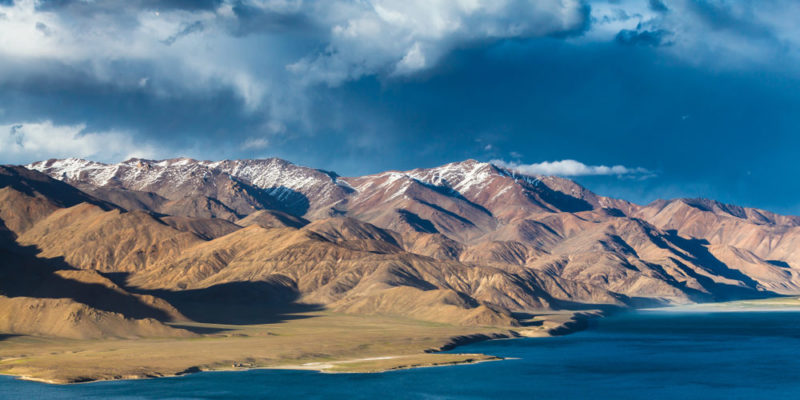We explain what Asia is, what is the location and main characteristics. Also, its economy, religion, tourism and more.
What is Asia?
Asia is the continent 's largest and most population of the planet , is located in the eastern part of the northern hemisphere. It has an area of 44 million km 2 and the number of inhabitants is around 4,460 billion, which is equivalent to 61% of the world's population.The Asian continent is part of the continental mass called Eurasia that it shares together with the European continent and that connects with the African continent through the Suez Canal. It is bordered by the Arctic Ocean to the north, the Indian Ocean to the south, the Pacific Ocean to the east, and the Ural Mountains to the west.
Asian Features
 The Asian continent is characterized by:
The Asian continent is characterized by:
- Being a vast territory in which plateau- type relief predominates , which is surrounded by mountain ranges in which the highest peaks of the earth's surface rise, such as those of the Himalayas, and the deepest ocean floors, such as those of the Sea of Sulú, passing through the tropical jungle, the desert and the Arctic.
- Have the widest climatic variation with respect to the rest of the continents, ranging from tropical to temperate. However, the continental climate predominates, presenting very cold and dry winters, and mild summers with a lot of rainfall. As a consequence, there is great biodiversity .
- The great historical, cultural and ethnic diversity. At present, Asia is made up of nations that are very different from each other, in terms of political, economic and social organization.
- The variety of official languages that is around 40 different types. The most common language is Arabic which is spoken in twelve countries, followed by others such as Mandarin Chinese, Hindi, Bengali, Russian and Urdu.
Largest countries and population
 Among the countries with the largest size and population, the following stand out:
Among the countries with the largest size and population, the following stand out:
- Russia. It comprises a territory of 17,089,250 km 2 with more than 145 million inhabitants.
- China . It comprises a territory of 9,562,710 km 2 with more than 1,383 million inhabitants.
- Indonesia. It comprises a territory of 1,913,580 km 2 with more than 230 million inhabitants.
- India . It comprises a territory of 3,288 km 2 with more than 1,347 million inhabitants.
- Japan . It comprises a territory of 377,970 km 2 with more than 127 million inhabitants.
Asia economy
 Economically, Asia is characterized by:
Economically, Asia is characterized by:
- Being the largest global food producer and due to the large population, it is also the largest consumer .
- Be a benchmark in technological development.
- Being among the largest economic world powers, especially due to the role of China and Japan.
- Having the second largest stock exchange in the world: Tokyo, which follows the New York Stock Exchange.
The Asian economy managed to take advantage of the opportunities of globalization , despite the financial crises, armed conflicts and natural disasters that it had to endure. However, its growth benefited significantly from domestic policies that allowed it to compete with foreign economies.
In the 1980s, the accelerated growth of mass production industries financed with foreign investment, together with intensive and cheap labor, led countries such as South Korea and Taiwan to export their production to first world economies, such as United States and Europe.
The East Asian market was small and it had to expand its trade by exporting much of its industrial production to the economies of other continents. In addition, it succeeded in fostering industrial development in other Asian countries, such as Indonesia, Malaysia, Thailand, the Philippines, southern China, and Vietnam.
In 1967 the Association of Southeast Asian Nations (ASEAN) was created with the aim of achieving greater development and economic stability in the regions that were part of the entity. However, it turned out to be an agreement for political cooperation against the spread of communism , rather than economic allies per se .
Unlike the European Union , all Asian economies competed with each other and each did everything possible to stay strong because they did not have any help or support from neighboring economies. In part, the creation of ASEAN was also intended to strengthen a group of economies.
In general, the Asian economies as a whole have managed to grow between 1990 and 2009 . During the 1990s, Japan was the most developed economy on the continent, until it went through a major crisis in 1997. However, it has managed to rebuild itself and remain one of the world's leading economic powers.
Asia religion

Asia is considered the birthplace of the main world religions , such as Judaism , Christianity , Islam , Buddhism and Hinduism . The vast continent has diverse cities and sacred sites with unique architectural works representing different beliefs. Many are considered World Heritage Sites and, together with the natural landscapes, are one of the main tourist attractions.
Tourism in Asia

The tourism is one of the most important industries in Asia. Among the main countries with great tourist attractions, the following stand out:
- Bhutan. Located in the Himalayan mountain ranges, it is noted for its landscapes and architecture , such as the Taktshang Monastery.
- Cambodia. It stands out for its main cities: the capital Phnom Penh, Angkor and Siem Reap with the Royal Gardens.
- China. It stands out for its capital Beijing, which presents an unprecedented architectural history, with buildings such as the Chinese Wall, the Forbidden City and the Summer Palace.
- Korea. Divided into two states, North Korea and South Korea, Pyongyang and Lake Tianchi stand out in the north, and Busan and Seoul in the south.
- India. It stands out for its monumental architecture, such as the Taj Mahal in the city of Agra, built between 1631 and 1648. It is considered one of the seven wonders of the world.
- Laos. It stands out for the city of Luang Prabag considered a World Heritage Site due to its temples. In Vientiane, its capital, the country's most important shrine, Pha That Luang, is located.
- Maldives. Located in the Indian Ocean, it stands out for its many natural attractions and for offering various activities to enjoy them, such as diving.
- Nepal . It stands out for its capital Kathmandu, one of the oldest cities, and its temples and its natural mountainous landscapes, such as the Himalayas.
- Singapore. It represents one of the largest economic sectors on the continent. It stands out for its architectural attractions, such as in Marina South and on Sentosa Island.
- Vietnam. It is noted for numerous World Heritage sites, such as Hoi An Ancient City, Ha-Long Bay, and the Mi-Sön Shrine.
MA student of the TransAtlantic Masters program at UNC-Chapel Hill. Political Science with a focus on European Studies. Expressed ideas are open to revision. He not only covers Technical articles but also has skills in the fields of SEO, graphics, web development and coding. .
Leave a reply
Your email address will not be published. Required fields are marked *Recent post

Sport: What Is It, Types, Risks, Features, Characteristics and Examples

Dogs: Emergence, Features, Characteristics, Feeding and Breeds

Story: Definition, Elements, Structure, Features and Characteristics

